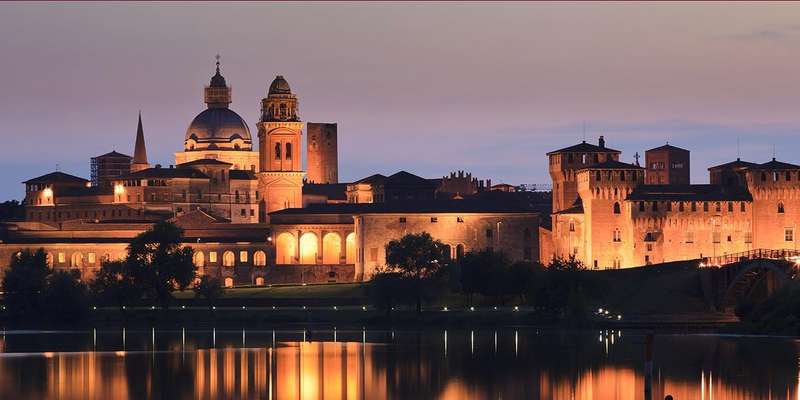- Home
- Useful Tips
- Mantua's most impressive...
Mantua's Renaissance facades represent one of Italy's most concentrated displays of architectural brilliance, yet most visitors miss their hidden details and historical significance. Over 60% of day-trippers focus solely on Palazzo Te, overlooking the city's other masterpieces like the Bibiena Theater or Casa del Mercato. This oversight means travelers leave without grasping how Mantua's ruling Gonzaga family transformed a swampy backwater into a cultural powerhouse through these very buildings. The frustration compounds when you later discover you've walked past UNESCO-listed treasures without understanding their stories or knowing where to find the best vantage points. Unlike Florence or Rome, Mantua's intimate scale means its architectural wonders reveal themselves only to those who know where to look – a challenge when time is limited and local guides book up weeks in advance during peak seasons.


Decoding Mantua's facade styles – how to spot Gonzaga-era brilliance
Mantua's Renaissance facades tell a visual story of power and innovation, but untrained eyes often miss the subtle transitions from medieval austerity to humanist elegance. The Ducal Palace's Clock Tower facade demonstrates early Renaissance experimentation with classical elements, while Giulio Romano's playful trompe-l'œil at Palazzo Te reveals Mannerist rebellion against perfect proportions. Local architects particularly prize the nearly invisible brickwork gradient at Santa Maria del Gradi, where courses narrow imperceptibly to create optical height. To appreciate these details, position yourself diagonally across piazzas during golden hour, when low light accentuates relief sculptures and terracotta decorations. Don't overlook seemingly plain buildings like the former Post Office on Via Pomponazzo – its rusticated doorway frames one of Mantua's first uses of the 'bugnato' technique later popularized in Florence.
The local's route for facade admirers – timing and vantage points
Seasoned Mantua residents follow an unwritten clockwise route that maximizes facade viewing while avoiding midday glare and tourist clusters. Begin at sunrise near Pescherie di Giulio Romano, where the fish market's loggia casts dramatic shadows across its diamond-point ashlar. By 9 AM, the angled light perfectly illuminates the allegorical figures on Palazzo d'Arco's facade – arrive later and you'll struggle to discern their details against the sun-bleached stone. A little-known pro tip: the narrow Vicolo Bonacolsi offers the only vantage point to simultaneously view three architectural eras in one glance – medieval, Renaissance, and baroque. For Palazzo Te's facade, locals always approach from Via Acerbi rather than the main entrance; this reveals the building's surprising suburban villa character before the monumental courtyard overwhelms your senses. These timing strategies require no special tickets or tours, just awareness of solar patterns that most visitors never consider.
Beyond the obvious – underrated facades even locals forget
While guidebooks fixate on Mantua's headline attractions, the city's true architectural soul emerges in overlooked gems like the Casa di Rigoletto's asymmetrical windows or the chromatic brick patterns at Sant'Orsola's convent. The Jewish Quarter hides extraordinary examples of Renaissance adaptability, particularly the Casa del Rabbino's facade blending Florentine pilasters with local brickwork traditions. Few notice how the seemingly austere exterior of San Sebastiano actually pioneered Alberti's church facade principles years before Rome's Sant'Andrea. For a fascinating comparison, study the material contrasts between the marble-clad Palazzo Canossa and nearby brick-and-stucco Palazzo Valenti Gonzaga – both designed within twenty years yet representing completely different interpretations of classical ideals. These lesser-known sites require no entrance fees and often stand completely empty, allowing you to examine stone carvings and mortar techniques at your own pace.
When to splurge – expert-led facade insights worth booking
Certain aspects of Mantua's architectural heritage demand expert guidance, particularly the Duke's private viewing loggias hidden within palace facades. Specialized art historians can point out where restorers discovered original giornata boundaries in Palazzo Te's frescoed exteriors, proving which sections Giulio Romano painted personally versus workshop contributions. Worthwhile tours also access normally closed vantage points like the upper galleries of Sant'Andrea's basilica, revealing how Alberti designed the facade to optically correct the sloping piazza. For photography enthusiasts, select local operators offer twilight sessions with tripod access to restricted areas, capturing the precise moment when setting sun aligns with Palazzo Ducale's fenestration patterns. These premium experiences typically cost €50-80 but transform superficial sightseeing into deep architectural understanding – particularly valuable during Mantua's frequent morning fogs when independent facade study becomes challenging.



